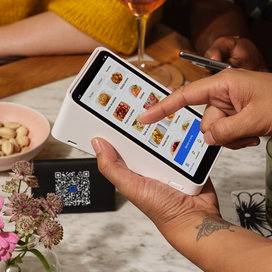Table of contents
Editor’s note: The changes proposed below were pushed from 2022 to 2023. These changes will take affect in 2023.
Form 1099-K reports earnings from payment card and third-party network transaction providers. This new change could impact your business if you sell online through Square, Etsy, or eBay, to name a few. Even if you didn’t use the form in the past, recent changes mean one could be showing up for your next tax season. If you work with online payment processors like Square, here’s some potentially helpful information about 1099-K reporting requirements in 2022.
What is Form 1099-K?
Form 1099-K is an official Internal Revenue Service (IRS) document titled “Payment Card and Third-Party Network Transactions.” Payment processors use the form to help the IRS and businesses prepare accurate annual tax returns.
The form includes information about the payment processor and the company receiving payments, and a monthly breakdown of total payments, among other information. You can view a blank version of the form here (PDF).
For 2022 tax filings, you may receive a 1099-K if you received over $600 in payments for the year, regardless of the number of transactions.
If you are accepting transactions using the following services (or any other similar third-party payment processing services), you may need to file a 1099-K this year:
- Cash App
- PayPal
- Stripe
- Square
- Venmo
- Zelle
What Changed on Form 1099-K for 2022?
Prior to tax year 2022, businesses had a much higher reporting threshold before receiving a 1099-K. Because of the changes, many businesses received this form for the first time.
Before 2022, businesses would generally receive a 1099-K tax form only when gross payments exceeded $20,000 for the year and the business conducted at least 200 transactions. As of the 2022 change in rules for the 1099-K, the gross payments threshold has been lowered to just over $600 for the year, and the transactions threshold no longer applies.
Changes to the 1099-K threshold may impact many small businesses. Even if you’re primarily a cash-heavy business that only occasionally uses third-party payment apps, Form 1099-K could arrive in your mailbox or inbox.
If you are a Square seller and have an account with $600 or more in gross sales from goods or services in the 2022 tax year, you may qualify for a Form 1099-K. Qualifications may vary from state to state.
How Business Owners Can Use Form 1099-K
Regardless of how you feel about the 2022 changes to the 1099-K, here are some recommendations to consider regarding what you might need to do if one shows up in your mailbox, email inbox, or anywhere else your business receives mail or financial notifications.
If you use a full-time accountant, bookkeeper, or tax preparation service, make sure to forward this form along, as they will need the 1099-K to double-check that your taxes are correct, even if they’ve been keeping your books updated monthly throughout the year.
Business owners who prepare their own taxes can use Form 1099-K to correlate their earnings with their financial records. Be sure to triple check your accounting as you will be inputting that information into your 1099-K tax filing. Payment card and third-party transactions must be reported to the IRS — they offer resources for frequently asked questions about new payment card reporting requirements.
Types of Businesses That May Need to File Form 1099-K
Information from Form 1099-K goes into different places depending on your business registration.
Businesses operating as a sole proprietorship or an LLC generally report their earnings on Schedule C, an additional form on their regular 1040 tax return. LLCs taxed as an S-Corporation, partnerships, and C-Corporations typically have to file their tax returns and may need to rely on Form 1099-K to verify revenue.
While the limit for this form changed for 2022, it could change from the $600 threshold. This threshold could increase or decrease over time so be sure to check yearly before filing.
Bottom Line on Form 1099-K
Form 1099-K doesn’t necessarily increase your taxes. Instead, it is primarily aimed at helping with tax preparation and trying to ensure that businesses accurately report earnings. If you use Square for payments, sales, or other retail features, you might find a copy of Form 1099-K in your Square Dashboard.
![]()












